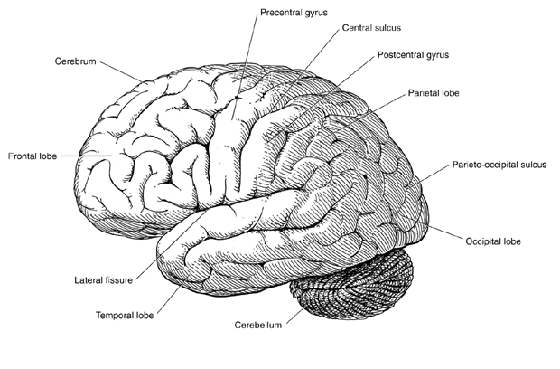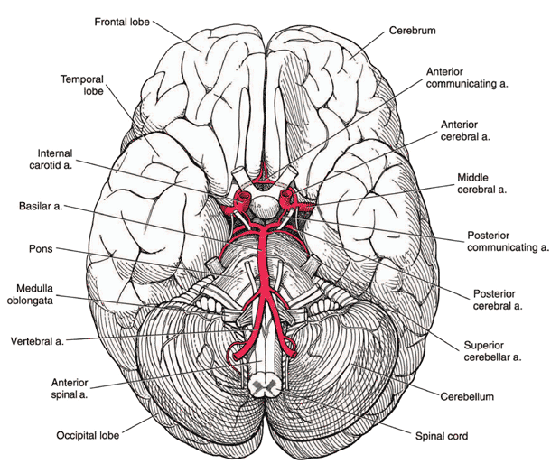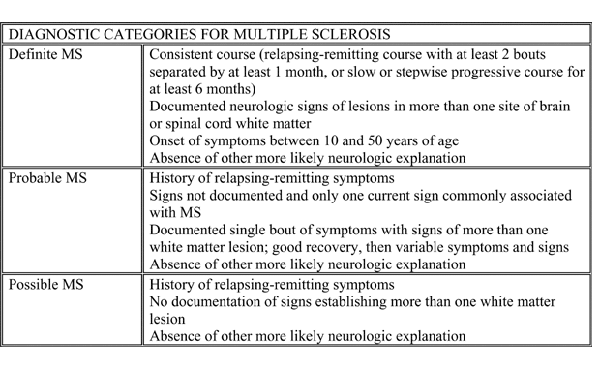Can I Get Social Security Disability Benefits for Multiple Sclerosis?
- How Does the Social Security Administration Decide if I Qualify for Disability Benefits for Multiple Sclerosis?
- About Multiple Sclerosis and Disability
- Winning Social Security Disability Benefits for Multiple Sclerosis by Meeting a Listing
- Residual Functional Capacity Assessment for Multiple Sclerosis
- Getting Your Doctor’s Medical Opinion About What You Can Still Do
How Does the Social Security Administration Decide if I Qualify for Disability Benefits for Multiple Sclerosis?
If you have multiple sclerosis (MS), Social Security disability benefits may be available. To determine whether you are disabled by MS, the Social Security Administration first considers whether your MS is severe enough to meet or equal a listing at Step 3 of the Sequential Evaluation Process. See Winning Social Security Disability Benefits for Multiple Sclerosis by Meeting a Listing. If you meet or equal a listing because of your MS, you are considered disabled. If your MS is not severe enough to equal or meet a listing, Social Security Administration must assess your residual functional capacity (RFC) (the work you can still do, despite your MS), to determine whether you qualify for disability benefits at Step 4 and Step 5 of the Sequential Evaluation Process. See Residual Functional Capacity Assessment for Multiple Sclerosis.
About Multiple Sclerosis and Disability
What Is Multiple Sclerosis?
Multiple sclerosis is a slowly progressive disease of the central nervous system (CNS), i.e., the spinal cord (see Figure 1 below) and brain. The incidence of multiple sclerosis in the U.S. is not reliably known—estimates vary between 250,000 to 350,000 people. In MS a substance known as myelin, which serves as the electrical insulating coating of nerve fiber tracts, is destroyed. Nerve tracts (bundles of communicating fibers) make up the “white matter” of the CNS. Therefore, white matter lesions (wounds or injuries) are characteristic of multiple sclerosis.

Figure 1: Interior view of the spinal cord.
The brain’s white matter lies beneath the brain’s outer cerebral cortex (see Figure 2 below), or “gray matter” that is composed of brain cells (neurons). Most of the volume of the brain is made up of cerebrospinal fluid-filled cavities and white matter. Since the white matter carries information to and from the cortical neurons composing the gray matter, the function of the gray matter can easily be affected by white matter abnormalities. For example, an impulse to move a leg that starts in the motor cortex of the brain could be disrupted when it enters the white matter for transmission to the spinal cord.

Figure 2: Outer cerebral cortex of the brain.
The myelin destruction associated with multiple sclerosis is called demyelinization. MS is not the only disorder that can result in that abnormality. The white matter lesions of demyelinating disorders are called plaques. The plaques of MS occur in multiple and varied locations in the spinal cord and brain, particularly the brain (see Figure 3 below). Brain cells that make myelin are also damaged, but can regenerate to some extent to produce more myelin.
Most people with multiple sclerosis have a normal lifespan, so it is not known as a fatal disorder.

Figure 3: Base of the brain.
Cause of Multiple Sclerosis
The cause of MS is unknown. MS is more common in temperate than tropical areas, and moving between geographic regions at certain ages can affect the risk developing the disorder. Theories as to cause have considered a virus, brain trauma, or a problem in the immune system, but these are little more than speculation. Close relatives of people with multiple sclerosis have a higher incidence of the disorder, and this supports the possibility of a genetic contribution.
Genes on multiple chromosomes are suspected of playing some role in MS. People with multiple sclerosis are more likely to have abnormalities in human leukocyte antigens (HLA), proteins coded from chromosome 6 and important in the functioning of the immune system. If there is a genetic contribution to the development of MS, the path of “cause and effect” is not yet understood. There is no genetic test for multiple sclerosis, and even if there is a genetic contribution to cause, unknown environmental factors (such as a particular virus) may also play a role.
Although the primary cause of MS is not known, dysfunction in the immune system is the mechanism by which MS damages nerve tracts. Immune system cells called T lymphocytes (a type of white blood cell) attack the myelin of white matter nerve tracts while B lymphocytes damage the nerve fibers (axons) themselves. While demyelinated areas caused by T cell attack impair nerve impulse transmission, the B cell damage to axons themselves is more serious and slower to repair itself, if repair is possible.
This dual mechanism could explain the different types of MS discussed below. Relapse and remittance of MS may be caused by T cell activity and progression may be caused by B cell activity. All of the answers will have to await future research.
Types of Multiple Sclerosis
Several patterns are possible in the way MS first appears and the way it manifests over time (its clinical course). A typical exacerbation (worsening) of MS lasts 2 to 4 weeks, and takes several months to resolve or improve. However, this pattern is subject to considerable individual variation.
- Relapsing-remitting MS is the most common type for which Social Security disability benefits are sought. In this form, MS first appears as a series of attacks interspersed with complete or partial improvement (remission), followed by some future relapse.
- Primary-progressive MS is characterized by a slow progression in clinical severity, although there may be minor temporary stabilization or improvement.
- Secondary-progressive MS begins as a relapsing-remitting form, then later becomes a primary-progressive form.
- Progressive-relapsing MS is characterized by worsening, with additional acute exacerbations.
Patients with particularly severe MS might be described as having “malignant MS,” while those with minimal symptoms and limitations for extended periods of time are sometimes referred to as having “benign MS.”
The course of MS can vary significantly from person to person. The Social Security Administration needs detailed medical evidence about how your illness has progressed over time to make the best disability determination.
Diagnostic Categories of Multiple Sclerosis
MS affects women more frequently than men and most often first produces symptoms in the 20 to 40 age range. Disease appearing before age 10 or after age 55 is a strong argument for some other kind of disorder. The diagnosis of MS is still fundamentally clinical—a judgment based on your doctor’s evaluation of the history and physical examination, severity of signs and symptoms over time, and test evidence. The diagnosis cannot be made based on laboratory results alone, and there are no physical abnormalities unique to MS.

Signs and Symptoms of Multiple Sclerosis
There are a large number of possible signs and symptoms of MS. Some patients have no signs or symptoms. The major possibilities are as follows:
- Muscle weakness sometime associated with muscle atrophy.
- Spasticity (uncontrolled muscle contractions) – chronic spasticity can impair gait or use of arms; sudden spasms (paroxysmal dystonia) in arms or legs may occur with changes in posture or even certain kinds of sensation.
- Impairment of pain, temperature, and touch senses – burning, itching, decreased sense of limb position, decreased touch or temperature sensation, etc.
- Pain (moderate to severe) – sharp pains, including severe facial nerve pain (trigeminal neuralgia).
- Ataxia – impaired ability to coordinate movement can range from mild to severe.
- Impaired balance.
- Tremors.
- Decreased dexterity – impairment of fine manipulatory ability.
- Speech disturbances – decreased clarity of articulation (dysarthria) caused by slurring, dyscoordinated speech (speech ataxia), “scanning,” i.e., with unnatural pauses and skipped sounds that result in a staccato-like delivery.
- Aphasia – difficulty in instigating speech, understanding writing, understanding spoken words, etc.
- Vision disturbances – paralysis of eye movement and pupillary function (internuclear ophthalmoplegia); double vision (diplopia), blurry vision (optic neuritis), abnormal eye movements (nystagmus); visual field loss is possible but unusual; color vision sensitivity may be decreased, Uhtoff’s phenomenon may occur (visual blurring after exertion or heat exposure).
- Vertigo – dizziness may be intense, with associated nausea and vomiting; caused by inflammation of the vestibular nerve (vestibular neuronitis).
- Bladder dysfunction – a common problem that may be urge incontinence, frequency, or decreased bladder sensation resulting in overflow incontinence.
- Bowel dysfunction – constipation is common; loss of sensation near the anal sphincter may result in bowel incontinence.
- Sexual dysfunction – frequently present as decreased libido in both sexes; erectile dysfunction in men; decreased vaginal lubrication in women.
- Depression and anxiety – resulting from poor self-image, sexual dysfunction, worry about spousal rejection, and the debilitating nature of chronic disease.
- Euphoria.
- Seizures.
- Cognitive (rational thinking) abnormalities – present in 40–70% of MS cases but profound mental impairment is uncommon.
- Fatigue – easy fatigability is associated with both physical and mental activity, and not necessarily associated with obvious physical impairment or depression.
- Exacerbation with exertion or exposure to heat.
- Multiple sclerosis may produce findings of both upper and lower motor neuron syndrome, depending on location of the lesions.
Treatment of Signs and Symptoms of MS
Each of the signs and symptoms of MS may require separate treatment. For example, antiepileptic drugs (AEDs) would be required to control seizures and are also helpful in the treatment of the exquisitely painful disorder known as trigeminal neuralgia. Spasticity may be helped by muscle relaxants such as Baclofen (Lioresal), diazepam (Valium) and other drugs. Optic neuritis is treated with corticosteroids like prednisone or intravenous methylprednisolone. Pain may require analgesic or antidepressant medication. A number of different agents have been used to treat fatigue, such as amantadine (Symmetrel), pemoline (Cylert), and antidepressants. Self-injected papaverine in the corpus cavernosum of the penis can help temporarily reverse erectile dysfunction. There are also drugs that can help inhibit an over-active bladder, such as dantrolene (Dantrium).
In addition to drugs, physical therapy, occupational therapy, speech therapy, or psychiatric therapy may be needed in individual cases as appropriate.
Current Therapies for Multiple Sclerosis
Therapeutic Goals
The goals of therapy for MS are threefold: to improve recovery from attacks, to prevent or lessen the number of relapses, and to halt disease progression. Numerous therapies have been tried, but so far, treatment of multiple sclerosis designed to cure or stop disease progression has failed.
Therapies for MS under investigation include various treatments to alter or suppress the immune system, therapies to improve nerve impulse conduction, and therapies to reverse the damage to myelin and oligodendrocytes (the cells that make and maintain myelin in the central nervous system).
Many patients do well with no therapy, especially since many medications have serious side effects and some carry significant risks.
Steroids
Until recently, the principal medications used to treat MS were steroids possessing anti-inflammatory properties; these include adrenocorticotropic hormone (ACTH), prednisone, prednisolone, methylprednisolone, betamethasone, and dexamethasone. While steroids do not affect the course of MS over time, they can reduce the duration and severity of attacks in some patients. The mechanism behind this effect is not known. Because steroids can produce numerous adverse side effects (acne, weight gain, diabetes, seizures, hypertension, cataracts, osteoporosis, psychosis), they are not recommended for long-term use.
Interferons
One of the most promising MS research areas involves naturally occurring antiviral proteins known as interferons. Three forms of beta interferon (Avonex, Betaseron, and Rebif) have been approved by the Food and Drug Administration for treatment of relapsing-remitting MS. Beta interferon has been shown to reduce the number of exacerbations and may slow the progression of physical disability. When attacks do occur, they tend to be shorter and less severe. In addition, MRI scans suggest that beta interferon can decrease myelin destruction. However, if a patient develops neutralizing antibodies to a therapeutic drug then its effectiveness will be reduced. Once neutralizing antibodies have appeared, it does no good to switch to another type of beta interferon since the antibodies associated with the three different drugs cross-react. Common side effects of interferons include fever, chills, sweating, muscle aches, fatigue, depression, and injection site reactions.
Fingolimod
An immunomodulating agent known as fingolimod has much less prominent side effects than interferons and can be taken orally. Fingolimod is aimed at treating relapsing MS, and initial trials show a low relapse rate with continuous oral maintenance, decreased symptoms, and decreased number of lesions on magnetic resonance imaging of the brain. Fingolimod has not been approved by the FDA for human treatment outside of clinical trials. However, there is a good chance fingolimod will turn out to be a useful agent.
Natalizumab
A drug known as natalizumab was approved for treating multiple sclerosis in 2004. Natalizumab decreases the ability of white cells to enter the central nervous system. In 2005, use of the drug had to be suspended due to the risk of a rare but fatal disease known as progressive multifocal leukoencephalopathy (PML). Also, other serious problems such as hypersensitivity reactions can develop. In 2006, the drug was again approved, but only for restricted use in relapsing multiple sclerosis. Patients with progressive MS are not treatable with this drug at the present time. Treatment with natalizumab must be given intravenously on a monthly basis at a special infusion centers.
The significance of a person receiving natalizumab is two-fold for disability adjudication:
- The diagnosis must be very secure for the drug to be used; this should suggest to the adjudicator that the claimant has MS beyond any reasonable doubt.
- The drug is dangerous; it can be cleared for use only when severe relapsing MS has not responded to other treatments.
Therefore, if you are receiving this drug for treatment of MS, it should be a red flag to the Social Security Administration adjudicator to allow your case when the medical evidence is developed. If the medical evidence does not support an allowance, there is almost certainly a deficiency in the development of that evidence. Even if you have seemingly improved on natalizumab, exceptionally careful consideration of the evidence should be done before concluding that you have achieved a steady-state of improvement that would permit sustained substantial gainful activity.
Continue to Winning Social Security Disability Benefits for Multiple Sclerosis by Meeting a Listing.



